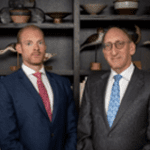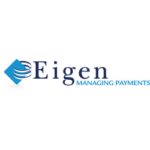 As background on ‘The Mille Club’ – with mille the Italian for a thousand or $1,000+ per night – while luxury or ultraluxury may not be for your company’s strategic direction, this category’s growth is one of the biggest trends in global hospitality real estate right now.
As background on ‘The Mille Club’ – with mille the Italian for a thousand or $1,000+ per night – while luxury or ultraluxury may not be for your company’s strategic direction, this category’s growth is one of the biggest trends in global hospitality real estate right now.
For reference, think of brands like Aman, Armani, Belmond, Bulgari, Capella, Fairmont, Langham, Mandarin Oriental, Montage, One&Only, Peninsula, Raffles, Ritz-Carlton, Rosewood, Six Senses, Soneva, St. Regis, Waldorf Astoria and, perhaps this trend’s modern progenitor, Four Seasons. Then throw in the associations and collections like Auberge, Dorchester, Leading Hotels of the World, Oetker, Preferred Hotels & Resorts, Rocco Forte and Relais & Chateaux. Every property is droolworthy.
Working in the upscale, luxury, ultraluxury categories, one counterintuitive observation of recent is that, even in a world of flashy websites and intelligent booking engines, the voice channel is still a very important part of the prebooking and prearrival stages of the journey for luxury guests. While we would never imply that ecommerce isn’t critical for hotels, luxury guests want a more personalized approach.
Often the only way to gain their confidence to secure the booking is through a phone call. For a typical luxury hotel, voice channel revenue can be as much as 20% of total room revenue, and it is the second-most profitable revenue channel, even including the labor costs associated with answering the call.
This persistence of voice emphasizes the need for reservation customization as a means of reinforcing rate plans that blooms into the high three figures and four-digit nightly price tags. A mantra that explains this rate growth and should also help to guide operations is: luxury guests may be price inelastic but they are entirely experience elastic. In other works, it’s all about time maximization.
To facilitate a high degree of reservation customization, Mille Club members should aim to have an omnipresent, 24/7 voice channel. Key here is that these bookings often have a higher than average total revenue (TRevPAR) with the revenue on the books farther in advance to smooth out staffing.
The difficulty here is that a res team represents a high fixed cost. But now consider the other tasks that intake teams also handle:
- Meal reservations
- Front desk service calls
- Group calls
- OTA confirmation calls (where typically four out of five luxury OTA bookers will call ahead)
In order to not have these calls roll over to the front desk and potentially compromise onsite service, upscale and luxury hotels need a robust headcount. Yet during the low season, this cost can easily dip from revenue-producing to expense.
A solution here is to turn this fixed expense to a variable one. That means recruiting a call center on a per-minute fee while setting up the necessary training and tracking to maintain brand standards and conversions. To get some more details on the cost-reducing outsourcing partners that are available for independents, small luxury brands, we engaged John Smallwood, President of Travel Outlook, a call center company whose luxury hotel clients include KSL Resorts and Viceroy Hotel Group.
During our discussion, Smallwood added about his company, “We average closing more than 65% of the qualified reservations calls we receive, and we also average an 80/30 SLA, meaning that we answer 80% of the calls we receive within 30 seconds. Net abandoned calls are usually less than 5%.”
The high degree of customization for voice channel bookings, a res team or call center partner has to have custom scripts in order to fulfill specific offerings such as spa rituals, beach rentals, skiing or excursions. Managers must also establish a seamless process for updating said scripts when there’s a special or new feature in order for any reservation agent, internal or external, to effectively sell.
Besides convincing you about the necessity of voice channel operations despite its higher cost, the key underlying reason for its endurance is convenience. With this in mind, there are several technologies that hotels should look out for as a means of augmenting voice without sacrificing the human touch.
Three tech tools to highlight are:
- CDPs and RPA for the CRM: Thinking in terms of total revenue requires hoteliers to look beyond the PMS and into customer relationship management (CRM), demanding more data structuring and cleaning into unified guest profiles via customer data platforms (CDPs) and robotic processing automation (RPA).
- Conversational AI: Imagine this as a chatbot for the voice channel – with Travel Outlook’s Annette AI as one example – able to answer a lot of the repetitive questions so that human agents can then focus their time on complex requests and closing high-TRevPAR bookings.
- GenAI Agents: With all the hype around large language models (LLMs) and generative AI (genAI), one future application for these technologies is to train then assign these AI agents via retrieval-augmented generation (RAG) to execute multi-step functions like automating personalized offers or automate complex guest requests.
This article may not be reproduced without the expressed permission of the authors.
































